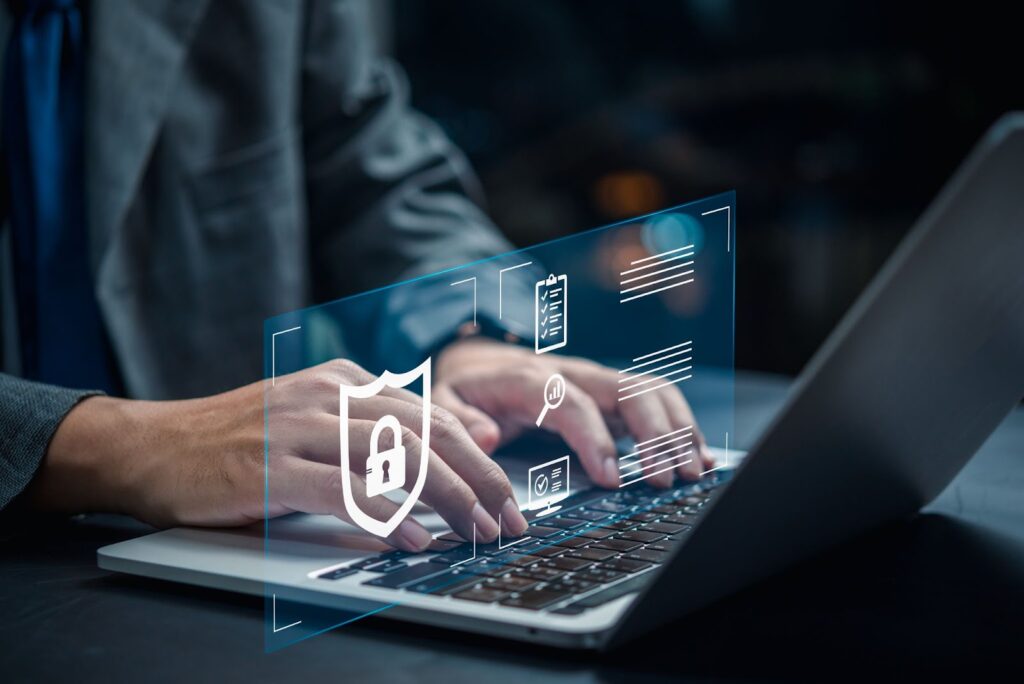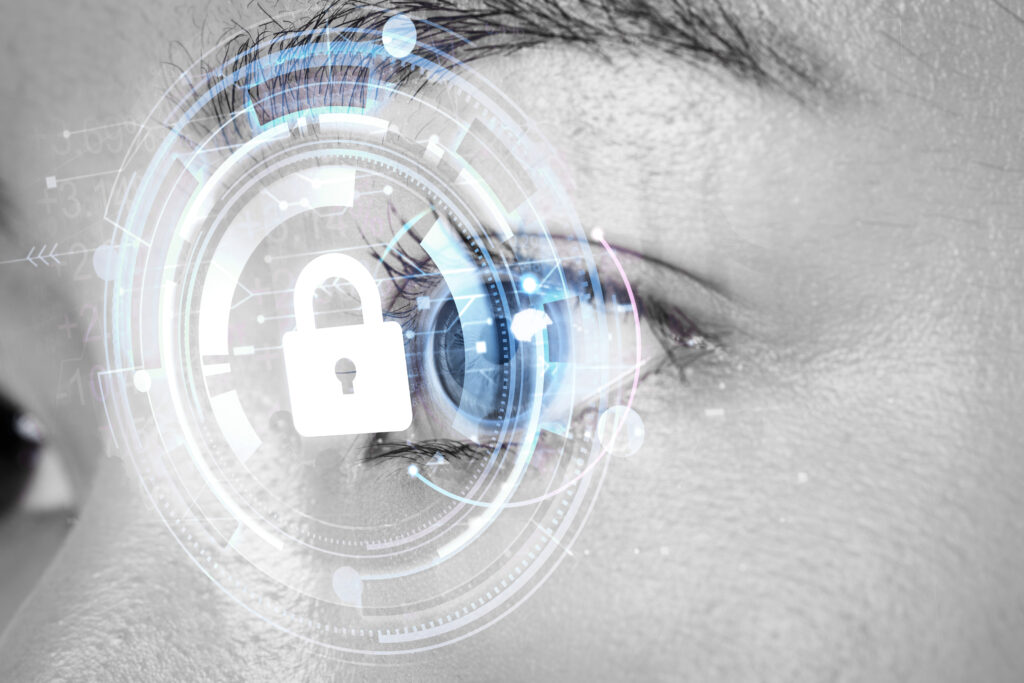1. Introduction
Accelerated digitization has brought undeniable gains to companies : more agility, system integration, scalability, and real -time data access. But this new scenario has also opened doors to vulnerabilities , often without managers.
With each integrated system, connected device or remote team operating, new breaches that can be explored appear. And the problem is not exactly in technology , but in the lack of strategy, prevention and preparation.
Therefore, cybersecurity today is no longer a technical theme: it is a business theme. And treating it as a priority is what separates resilient companies from those vulnerable to the next invisible attack.
2. The challenge of cybersecurity in the digital world
Accelerated digitization has brought undeniable gains to companies : more agility, system integration, scalability, and real -time data access. But this new scenario has also opened doors to vulnerabilities , often without managers.
With each integrated system, connected device or remote team operating, new breaches that can be explored appear. And the problem is not exactly in technology , but in the lack of strategy, prevention and preparation.
Therefore, cybersecurity today is no longer a technical theme: it is a business theme. And treating it as a priority is what separates resilient companies from those vulnerable to the next invisible attack.
2.1. The new digital reality of companies: more connected, more exposed
The traditional infrastructure model - where everything was indoors, behind firewalls - no longer exists. Today, the data travel in public and private clouds; transit between Apis and SaaS; They are accessed by home office and also processed by automated systems.
This hyperconnected reality has brought a new kind of challenge : How to protect a perimeter that no longer has borders?
Companies need to deal with hybrid environments, multiple devices, outsourced suppliers and constant integrations. And this requires a modern, dynamic and continuous security approach, ie no more punctual actions or “after” solutions.
2.2. The evolution of threats and the performance of criminals
While companies digitize themselves, cybercriminals also evolve. They are no longer hackers isolated in dark rooms to become organized groups, with structure, goals and even technical support . The threats today are:
- More sophisticated : use social engineering, artificial intelligence and automation to explore vulnerabilities with agility;
- Quieter : many attacks remain months without being detected;
- Most targeted : explore specific breaches in the company's sector or size.
The goal is not just to cause damage. It is to stop operations, kidnap data and profit from chaos. And who is not prepared, unfortunately, becomes easy target.
Now that we understand the scenario and why digital security has become a strategic theme, it's time to dive into the main types of threats your business can face and the impacts they can have.
3. The most common threats and their impacts
Knowing that there are risks is not enough. The real challenge is to recognize which threats are most frequent, how they manifest and what they can cause. Often the attacks start invisibly -an email , a link , an outdated system. And when the damage appears, the damage is already underway.
Before reacting, you need to know . Therefore, in this section, we will detail the most common types of attacks on the current scenario and the real impacts they bring to the business.
3.1. MAIN TYPES OF ATTACKS
Cyber attacks have evolved, and today it does not need a spectacular invasion to cause serious damage. Just a small gap , a distraction. Check out the most recurring attack vectors below:
- Ransomware : One of today's most destructive attacks. Kidnights company data through encryption and requires payment (usually in cryptocurrencies) to release them. It affects from hospitals to industries, paralyzing operations for days;
- Phishing : Social engineering technique that deceives users with emails , websites or fake messages. It seems legitimate, but the goal is to steal passwords, bank data or access credentials. Today, the blows are highly personalized;
- Malware and Trojans : Malicious programs that settle silently, collecting data, monitoring activities, or opening doors to other attacks. In many cases, malware acts for months without being detected;
Via API attacks and vulnerable integrations : In hyperconnected environments, poorly configured APIs are one of the points most explored by attackers, especially when integrated ERPs, CRMS or legacy systems without proper protection.
3.2. Impacts on the business: from financial to strategic
A cybership does not only generate technical damage: it can compromise the company's operation, image and survival. Check out what are the most critical impacts:
- Operational Interruption : Systems are out of breath, processes are paralyzed and entire teams are unable to work. This impacts production, deliveries and service;
- Loss and leakage of sensitive data : In addition to legal risk, data leakage can affect relationships with customers, partners and the market;
- Fines and Penalties : The General Personal Data Protection Law (LGPD), GDPR ( General Data Protection Regulation , General Data Protection Regulation) and other regulations require clear protection and response measures. Companies that do not meet may suffer millionaire sanctions;
- Damage to reputation and confidence : After an attack, many companies face market distrust, customer loss and drop in the brand's perceived value;
- Time, the invisible cost : time spent research, correction, crisis communication and recovery. In cybersecurity, every hour counts, and every minute stopped expensive.
Knowing the threats is the first step. The second is to know how to protect yourself from them consistently, without locking the operation or complicating processes .
Next, we will explore the most effective practices to reinforce digital security in your company's daily life.
4. Good cybersecurity practices in companies
Digital security is not just about the technology that your business adopts, but how it thinks, acts, and behaves in the face of risks. Thus, effective cybersecurity is not born of isolated actions : it is built from well -defined processes, appropriate tools and an active prevention culture.
In this section, we gather the most recommended practices to protect data, systems and people in an increasingly connected environment.
4.1. Internal policies and security culture
Investing in technology is important, but no tools are effective if people do not know how to act . Most attacks still start with a wrong click, a weak password or careless behavior. Therefore, creating a clear, accessible and applicable internal security policy is essential.
Check out some points to be adopted:
- Access governance : define who can access what, based on functions and profiles;
- Strong passwords and periodic renewal : simple but still ignored by many companies;
- Continuous Training : Approach phishing , social engineering and good navigation practices objectively and recurrently;
- Report Culture : Create channels so that any employee can signal suspicious behaviors or emails without bureaucracy.
In short, cybersecurity begins in behavior. And companies that build a prevention culture come out ahead.
4.2. Fundamental tools
After structured internal policies, it is time to ensure that the technological base is prepared to respond to the most common threats . Here we don't talk about complex but indispensable tools that must be active in any digital operation. Check it out:
- Firewall and corporate antivirus : Protect the network against unauthorized access and malicious software
- Data encryption : especially for transit sensitive information or stored in the cloud;
- Backup and Recovery : Essential to maintain the operation in case of attack, with automatic, isolated and periodically tested backups;
- Multifator Authentication (MFA- Multi-Factor Authentication ) : An additional layer of protection against improper access, especially in critical systems.
More than being about having “all market tools,” is about having the right, well -configured, well -used and well -used tools .
4.3. Monitoring and Continuous Audit
Many attacks do not happen suddenly. They are planted with subtlety, explore breaches over time , and only manifest themselves when it is too late. This is why companies with maturity in security treat monitoring as a routine, not as an exception.
Check out the best practices:
- Real -time monitoring : to identify anomalous behaviors, unusual -standard accesses, or unusual activities;
- Periodic audits : review policies, access and configurations in search of weaknesses;
- Log and Alert Analysis : Turns technical data into called warning signals;
- Review of integrations and APIs : especially in environments that connect various systems.
Therefore, cybersecurity should not be a final goal, but a living process that requires constant surveillance and adjustments .
Even with good practices implemented, no structure is immune to unexpected failures or attacks. This is why, in addition to preventing, companies also need to be prepared to react .
So let's talk about how to build an efficient response plan and why is post-ending agility as important as preventive protection?
5. How to prepare for security incidents?
In cybersecurity, the question is not whether your business will be the target of an attack, but when. And the way it responds to this scenario can define not only the extent of damage, but market confidence and business continuity.
Having an answer plan is not a technical luxury: it is a competitive advantage . This is what differentiates companies that collapse in the face of an incident from those that circumvent the crisis quickly and credible.
We can say that prepared companies do not avoid all incidents, but they face better, learn more and recover faster . Let's see how this is possible in practice!
5.1. Creating an efficient response plan
When an incident happens, there is no room for improvisation. The company needs a clear, validated and known script for everyone involved . An effective incident response plan should contain:
- Incident Classification : You need to know how to differentiate anomalous behavior from a real attack. This avoids false alarms and accelerates real answers;
- Mapping of critical systems : Not everything needs to be restored at the same time. Knowing what is essential to keeping operation alive is part of the strategy;
- Designation of responsible and clear papers : Who isolates systems? Who talks to stakeholders ? Who takes care of external communication? A plane without owners is a useless plan;
- Immediate action flow : threat insulation, backup , data integrity verification, supplier drive - everything needs to be documented;
- Crisis Management and Communication : The way the company communicates the incident to customers, partners and authorities can mitigate (or amplify) reputational damage;
Post-Inincent Registration and Analysis : What did it work? What did you do? What processes need to be adjusted for the future?
5.2. Practical simulations and tests
If planning is essential, testing is even more. After all, a plan only proves functional when tested under pressure , in a controlled manner.
Therefore, practical simulations are the best way to train the team and identify bottlenecks before they become real problems. Consider applying the following methods:
- Tabelep Exercises (table exercise) : simulated meetings with all involved, analyzing different attack scenarios and testing decisions in real time;
- Pentests (Invasion Tests) : Experts try to explore real failures in the company's infrastructure before criminals do it;
- Phishing attack simulations : emails are sent to employees as a test. Who clicks, learns; Who reports, protects;
- Backup and Recovery Tests : It's not enough to have backup , you need to know if it works, how long it takes to restore, and if the data is righteous.
In addition to training the answer, these exercises strengthen the security culture , create reflexes in the team and show the market that the company takes their digital resilience seriously.
Therefore, preparing for incidents is no exaggeration: it is responsibility. Having a clear plan, testing scenarios, and involving the right people are fundamental steps to ensure not only security but also credibility and compliance.
And that is precisely what we will deal with: What are the data protection regulations Keep following!
6. Compliance with data protection laws
In a scenario of hyperconnectivity, more than a good practice, protecting data is a legal obligation . Several countries have already established strict regulations to ensure the privacy and security of personal information, and companies that ignore these rules are serious : millionaire fines, operating blocks and irreversible reputation damage.
Being in accordance does not just mean signing policies or installing tools. The true meaning is to understand what the law requires and transforms it into process, culture and governance .
6.1. Understanding the main regulations
Concern about data privacy is no longer an isolated movement. Today, it is a global trend, and more and more countries are creating specific laws to regulate as personal data are collected, treated and protected.
Next, get to know the main regulatory frameworks that impact Brazilian companies and/or digitally operate in the world:
LGPD - General Data Protection Law
In force since 2020 in Brazil, LGPD regulates as public and private companies must collect, store, treat and share personal data.
- Requires clear consent of the data holder;
- Defines rights such as access, correction and exclusion of data;
- Determines the existence of technical and administrative security measures;
- Applies fines that can reach $ 50 million per infraction.
GDPR - General Data Protection Regulation (General Data Protection Regulation)
Created by the European Union (EU) and in force since 2018, GDPR is a global reference and inspires legislation in several countries.
- Guarantees European citizens total control over their personal data;
- Requires explicit consent, transparency and accountability;
- Establishes fines of up to 20 million euros or 4% of annual global revenues;
- It applies to any company in any country that processes data from EU citizens.
CCPA - California Consumer Privacy Act
In force since 2020, it is one of the most advanced laws in the United States of America (USA) in terms of data protection.
- Allows consumers to know which data is collected and with whom it is shared;
- Gives the right to choose not to sell your data;
- It requires companies to delete information upon request.
PIPL - Personal Information Protection Law (China Personal Information Protection Law)
He entered into force in 2021 and is considered one of the most severe legislation in the world.
- Regulates the processing of data from Chinese citizens, including foreign companies;
- Requires informed consent, limited use and regular audits;
- It prohibits data transfer out of China without express approval.
As we can see, the trend is clear: data protection has become a global standard. Companies operating in digital environments, even locally, need to be aware of legal obligations and adapt their processes , with intelligence and responsibility.
6.2. Keeping your business in accordance with
Being in accordance with data protection laws goes beyond avoiding fines. It is about building a solid base of trust with customers, partners and the market . But how to get out of theory and actually apply the principles of these daily regulations?
See the essential pillars to transform the data protection theory into practice in everyday life:
- Data Mapping and Control : Identify what data is collected, where it is stored, who has access and how long it is in the company. This inventory is the basis of any protection strategy;
- Legal basis for each data : For each data collected, clearly define why it is necessary and with what legal basis you deal with (for example: consent, legal obligation, legitimate interest);
- Safety as a practice, not only a tool : implementing encryption, multifator authentication, access control and backups . At the same time, also create internal policies and monitor access continuously;
- Training and Culture : Empower your team to recognize risks, act responsibly, and understand that compliance is not just “legal role” - it's everyone;
- Fast response to incidents : Have a clear action plan for leaks or invasions. LGPD requires quick communication from ANPD and holders, after all, transparency is part of compliance.
In a nutshell, complying with data protection laws is the new minimum. The real differential is how your company turns it into competitive advantage, operational efficiency and market confidence.
7. Your company doesn't have to face all this alone: meet Skyone
The truth is that cybersecurity and compliance are complex journeys for many companies. But they don't have to be.
Skyone exists precisely to simplify this path . With a platform that combines robust technology, cutting -edge security and data management intelligence , we help companies protect what matters and grow confidently, even in a challenging digital scenario.
Our role goes beyond delivering tools: We work as strategic partners, ensuring that your business is prepared to prevent risks, respond to incidents and stay in accordance with the main regulations of the market.
In practice, we deliver:
- Single platform with modular architecture , scalably, flexible and connected to the systems you already use;
- Safety embedded by default , with encryption, backups , access control and continuous monitoring;
- Cloud environment with high availability and performance ;
- Centralized management integrated data governance ;
- Specialized support and teams dedicated to customer success.
Believe me: protecting your business data may not be difficult. And it shouldn't be your business alone against the digital world!
Want to understand how to count on our support throughout this journey? Talk to one of our Skyone experts and find out how your business can raise security, simplify data management, and grow more confidence and less risks.
8. Conclusion
The digital age has brought infinite opportunities but also new risks that can no longer be ignored . Thus, protecting data from your company is no longer just a IT function to business responsibility - which directly impacts continuity, reputation and growth.
Throughout this article, we have seen that cybersecurity requires more than tools: it requires strategy, preparation, culture and governance . We explore the main types of threats, the real impacts they cause, and show concrete practices to strengthen the digital protection of your company, of course, without locking the operation.
Another important point we also talked about was about the importance of complying with the main data protection laws , and how this can become a competitive differential, not just a legal obligation.
The challenge is real, but you don't have to face it alone. We at Skyone are ready to support you and your business on this journey, offering a safe, scalable and performance -oriented platform.
If this content has made sense to you, keep browsing our blog ! Other articles can enrich your knowledge and provide new insights on technology, productivity and safety.

Caco Alcoba
With extensive experience in cybersecurity, Caco Alcoba is a true guardian of the digital world. In Skyone's “Caco do Caco column”, he shares sharp cyber threats, data protection and strategies to maintain constantly evolving digital environment.




